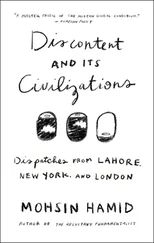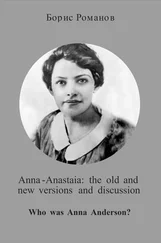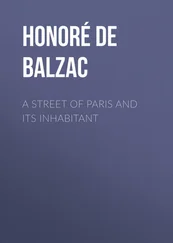Henry Edwards - Old and New Paris - Its History, Its People, and Its Places, v. 2
Здесь есть возможность читать онлайн «Henry Edwards - Old and New Paris - Its History, Its People, and Its Places, v. 2» — ознакомительный отрывок электронной книги совершенно бесплатно, а после прочтения отрывка купить полную версию. В некоторых случаях можно слушать аудио, скачать через торрент в формате fb2 и присутствует краткое содержание. Жанр: foreign_antique, foreign_prose, Путешествия и география, на английском языке. Описание произведения, (предисловие) а так же отзывы посетителей доступны на портале библиотеки ЛибКат.
- Название:Old and New Paris: Its History, Its People, and Its Places, v. 2
- Автор:
- Жанр:
- Год:неизвестен
- ISBN:нет данных
- Рейтинг книги:4 / 5. Голосов: 1
-
Избранное:Добавить в избранное
- Отзывы:
-
Ваша оценка:
- 80
- 1
- 2
- 3
- 4
- 5
Old and New Paris: Its History, Its People, and Its Places, v. 2: краткое содержание, описание и аннотация
Предлагаем к чтению аннотацию, описание, краткое содержание или предисловие (зависит от того, что написал сам автор книги «Old and New Paris: Its History, Its People, and Its Places, v. 2»). Если вы не нашли необходимую информацию о книге — напишите в комментариях, мы постараемся отыскать её.
Old and New Paris: Its History, Its People, and Its Places, v. 2 — читать онлайн ознакомительный отрывок
Ниже представлен текст книги, разбитый по страницам. Система сохранения места последней прочитанной страницы, позволяет с удобством читать онлайн бесплатно книгу «Old and New Paris: Its History, Its People, and Its Places, v. 2», без необходимости каждый раз заново искать на чём Вы остановились. Поставьте закладку, и сможете в любой момент перейти на страницу, на которой закончили чтение.
Интервал:
Закладка:
The Italians, too, are said to have employed artillery in the thirteenth century, but there is no positive proof of its having been used until the middle of the fourteenth, when, so far as Europe is concerned, Roger Bacon’s invention, and all previous inventions of the same kind, had borne no fruit, whereas the discovery made by Berthold Schwartz received instant application.
CHAPTER XVII.
THE VAL DE GRÂCE – RELICS OF THE GREAT
RETURNING from the Museum of Artillery to the Museum of the Hôtel Cluny, we see, from the Cluny garden, the portico of the ancient church of Saint-Benoit, first transformed into the Théâtre du Panthéon, and then demolished. Enclosed by the church and cloister of Saint-Benoit was an open space, in which, on the 5th of June, the day of the Fête-Dieu, 1455, François Villon, the wild vagabond poet, assassinated the priest Philippe Chermoye, his rival in love. Closed at the time of the Revolution, and then sold as national property, it was afterwards, in 1813, converted into a flour depôt. In 1832, on the site of the ruined church, was built the Théâtre du Panthéon, where Alexandre Dumas brought out his drama of Paul Jones . The Théâtre du Panthéon, after remaining closed for some years, was pulled down in 1854. Near it, however, on the other side of the Hôtel Cluny, looking towards the Boulevard Saint-Germain, was built the Théâtre des Folies Saint-Germain, where were produced Les Inutiles of Edouard Cadol, Les Sceptiques of Felicien Mallefille, and a number of other amusing pieces.
In the neighbourhood of the Hôtel Cluny and of the Théâtre Cluny is a very interesting establishment: the Deaf and Dumb Institution of the benevolent Abbé de l’Epée, to whom the deaf and dumb are indebted not only for the language of signs, which for them replaces speech, but also for the establishment in which the deaf and dumb children receive the education and instruction necessary for them to make their way in the world. But those inmates intended by their parents for a liberal profession are charged one thousand francs (£40) a year. The departments, communes, and charitable institutions of the country maintain purses of about 6,000 francs. The State has the disposal of 140 purses, from which it makes to the institution an annual allowance of 70,000 francs. There are higher classes for children who desire to follow them, with workshops for children who will have to subsist by manual labour. In 1785 the Deaf and Dumb School, carried on until that time in the Rue des Moulins at the Butte Saint-Roch, received an annual subvention of 34,000 francs. The Abbé de l’Epée died on the 23rd of December, 1789, at the age of seventy-seven. His funeral oration was pronounced on the 23rd of January, 1790, by the Abbé Fauchet, preacher-in-ordinary to the king. On the 21st of July in the following year the National Assembly voted an annual sum of 12,700 livres ( i. e. , francs) for the Deaf and Dumb School, which now, from the Convent of the Celestins, where Queen Marie Antoinette had established it, was transferred to the ancient seminary of Saint-Magloire, Rue du Faubourg Saint-Jacques.
The Deaf and Dumb School was reconstructed in 1823 by the architect, M. Peyre, who left it as it now stands. It is looked upon as the perfect model of institutions of the kind. It contains, besides the class-rooms, refectories, dormitories, and workshops, not to mention the rooms in which the sittings of the “Central Society of Education and Assistance for the Deaf and Dumb” are held.
Almost opposite the entrance to the Deaf and Dumb Institute is the Rue des Ursulines, and just beyond, the Rue des Feuillantines, where Victor Hugo passed the happiest years of his childhood, to which reference is made in some of the finest verses of the Orientales . The Rue Saint-Jacques now joins the Rue d’Enfer, which separates it from the Boulevard Saint-Michel. The Rue d’Enfer owes its ominous name to a belief entertained in the eighteenth century that it was haunted by the fiend. Various plans for driving away the common enemy of man were suggested, until at last the bright idea occurred to someone of making over the entire street to an order of monks, who, it was thought, would be able, if anyone could, to deal with the invader from below. Either by some exorcising process, or by the natural dread which Satan or his emissary could not fail to experience at being brought beneath the observation of so many pious brethren, the Rue d’Enfer, from the time of its passing into the hands of the religious order, became one of the quietest thoroughfares in Paris. It still, however, in memory of the old legend, preserves its ancient name. No. 269 in the Rue d’Enfer, which runs out of Paris by the side of the Luxembourg Gardens, and takes us almost to suburban parts, is the house, formerly a Benedictine monastery, where, until the Revolution, was preserved the body of James II. of England, who had died at Saint-Germain-en-Laye on the 16th September, 1701, and of Louise Marie Stewart, his daughter, who died at the same place in 1727.
We now approach the Val de Grâce, that superb monument which Anne of Austria founded in 1641 as a thank-offering for the birth of the dauphin, afterwards Louis XIV., who came into the world when his mother had been twenty-two years without giving birth to a child. The young king, now in his eighth year, laid the first stone of the Val de Grâce on the 1st of April, 1645. Mansard, the royal architect, had drawn up the plan and begun the work, when serious difficulties presented themselves; for the site of the church was just above the catacombs. To reach a foundation, it was necessary to make a number of deep piercings, besides supporting the new edifice with blocks of solid masonry. One of Molière’s few serious poems is in honour of the Val de Grâce and of its architect, who was numbered amongst his most intimate and most cherished friends. After a very short time, however, the direction of the works was taken from Mansard, and given to Jacques le Mercier. Finally, Pierre de Muet was entrusted with the difficult but honourable task; nor did he finish the work without the assistance of two other architects, Gabriel le Duc and Duval.
The façade of the Val de Grâce, like that of the Sorbonne, is composed of two Corinthian orders, placed one above the other. Around the cupola Pierre Mignard has painted a large fresco representing the abode of the blest, divided into many mansions. This admirable work is certainly (as Molière pointed out in the poem previously referred to) Mignard’s masterpiece; and it may well be regarded as the most important wall-painting in Paris. The mosaic of the marble pavement, in spite of its dilapidated condition, is another attraction connected with this fine building. The principal altar, reproduced from that of St. Peter’s at Rome, had been destroyed in the revolutionary days of 1793. But the architect, Ruprich Robert, reconstructed it by order of the Emperor Napoleon III.; and it was consecrated after the fall of the Second Empire, on the 28th of July, 1870. The paintings which adorn the chapel are by Philippe of Champagne and his nephew, Jean Baptiste. The dome, which seemed to be in an insecure condition, was reconstructed and strengthened by means of iron supports in 1864 and 1865.
Closed in 1790, the Church of Val de Grâce was used as a magazine for stores during the Republic and the Empire; and it was not restored to public worship until 1826. The hearts of the princes and princesses of the royal family were successively deposited in the different chapels of the church, the first being that of Ann Elizabeth, daughter of Louis XIV., who died in tender years; the last that of Louis, Duke of Burgundy, who died March 27, 1761. These hearts were thrown to the winds in 1793, but not the reliquaries of gilded enamel in which they were enclosed. One alone was saved: the heart of the dauphin, son of Louis XVI. and of Marie Antoinette, which was restored to the royal family and afterwards deposited at Saint-Denis in 1817. Two hearts are still deposited in the ancient vaults: that of an English woman named Mary Danby, of whom no record has been preserved, and that of Larrey, the illustrious surgeon-in-chief to the Grand Army, whose statue in bronze, by David of Angers, adorns the courtyard of the Val de Grâce.
Читать дальшеИнтервал:
Закладка:
Похожие книги на «Old and New Paris: Its History, Its People, and Its Places, v. 2»
Представляем Вашему вниманию похожие книги на «Old and New Paris: Its History, Its People, and Its Places, v. 2» списком для выбора. Мы отобрали схожую по названию и смыслу литературу в надежде предоставить читателям больше вариантов отыскать новые, интересные, ещё непрочитанные произведения.
Обсуждение, отзывы о книге «Old and New Paris: Its History, Its People, and Its Places, v. 2» и просто собственные мнения читателей. Оставьте ваши комментарии, напишите, что Вы думаете о произведении, его смысле или главных героях. Укажите что конкретно понравилось, а что нет, и почему Вы так считаете.












